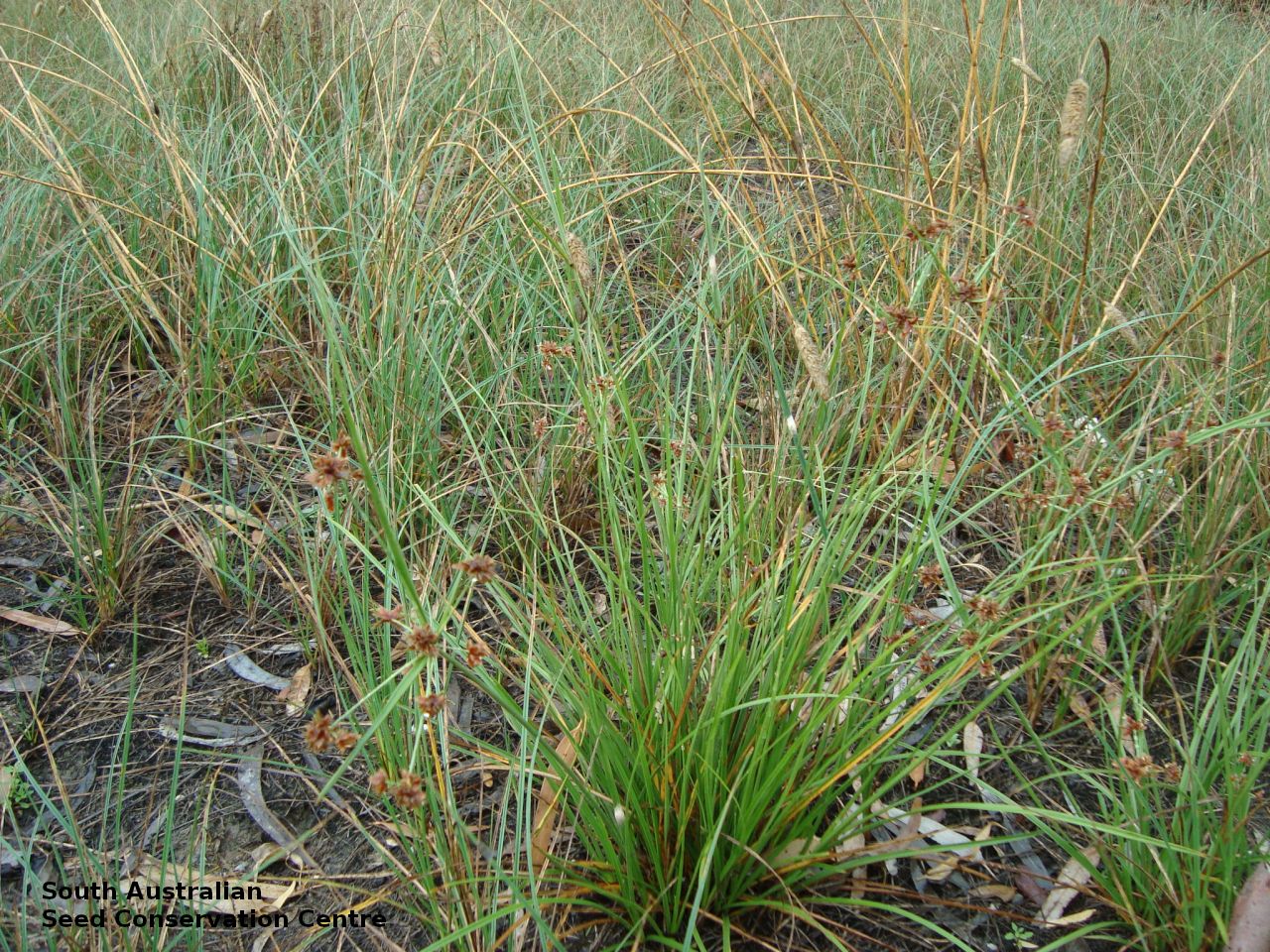
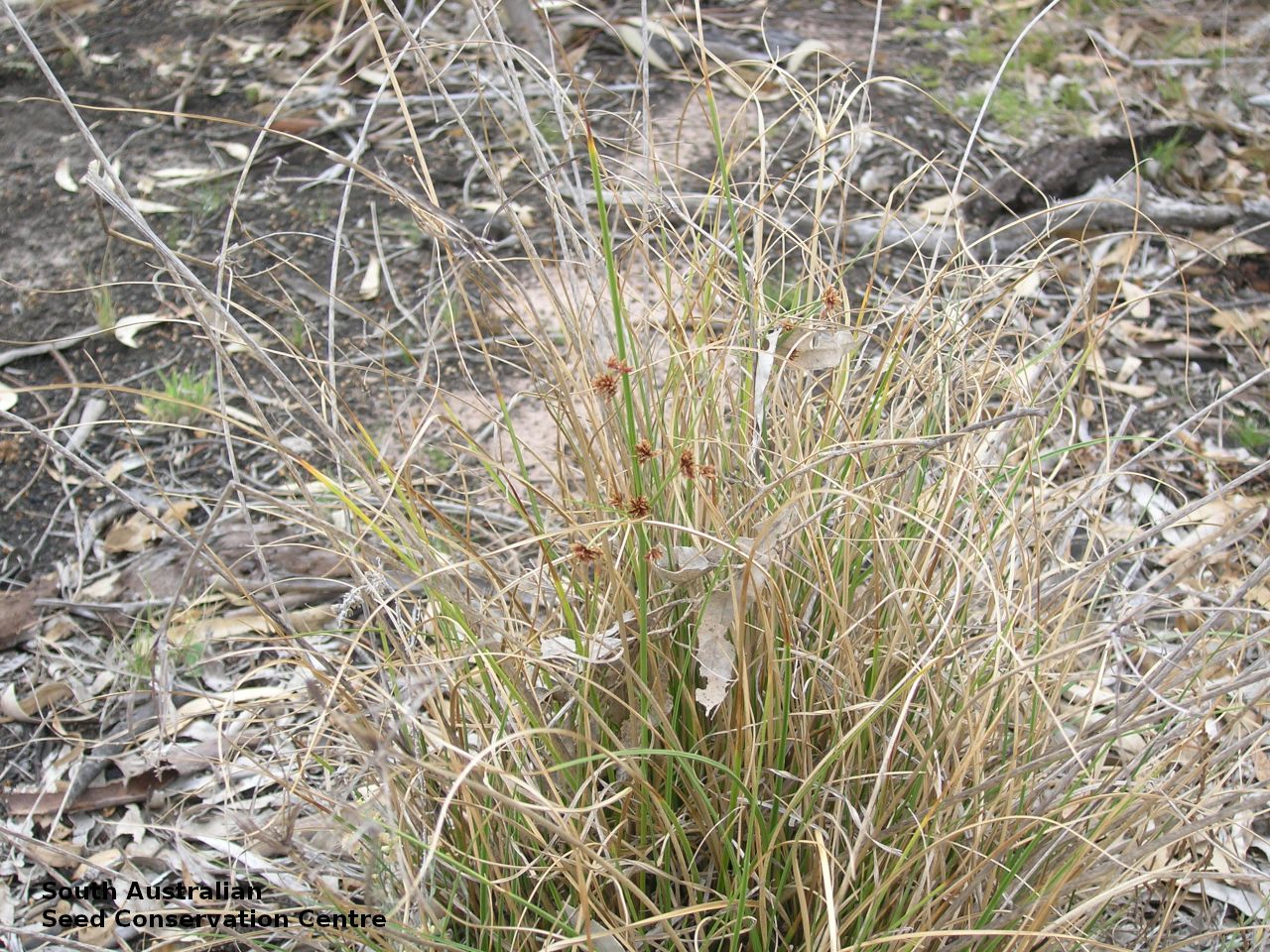
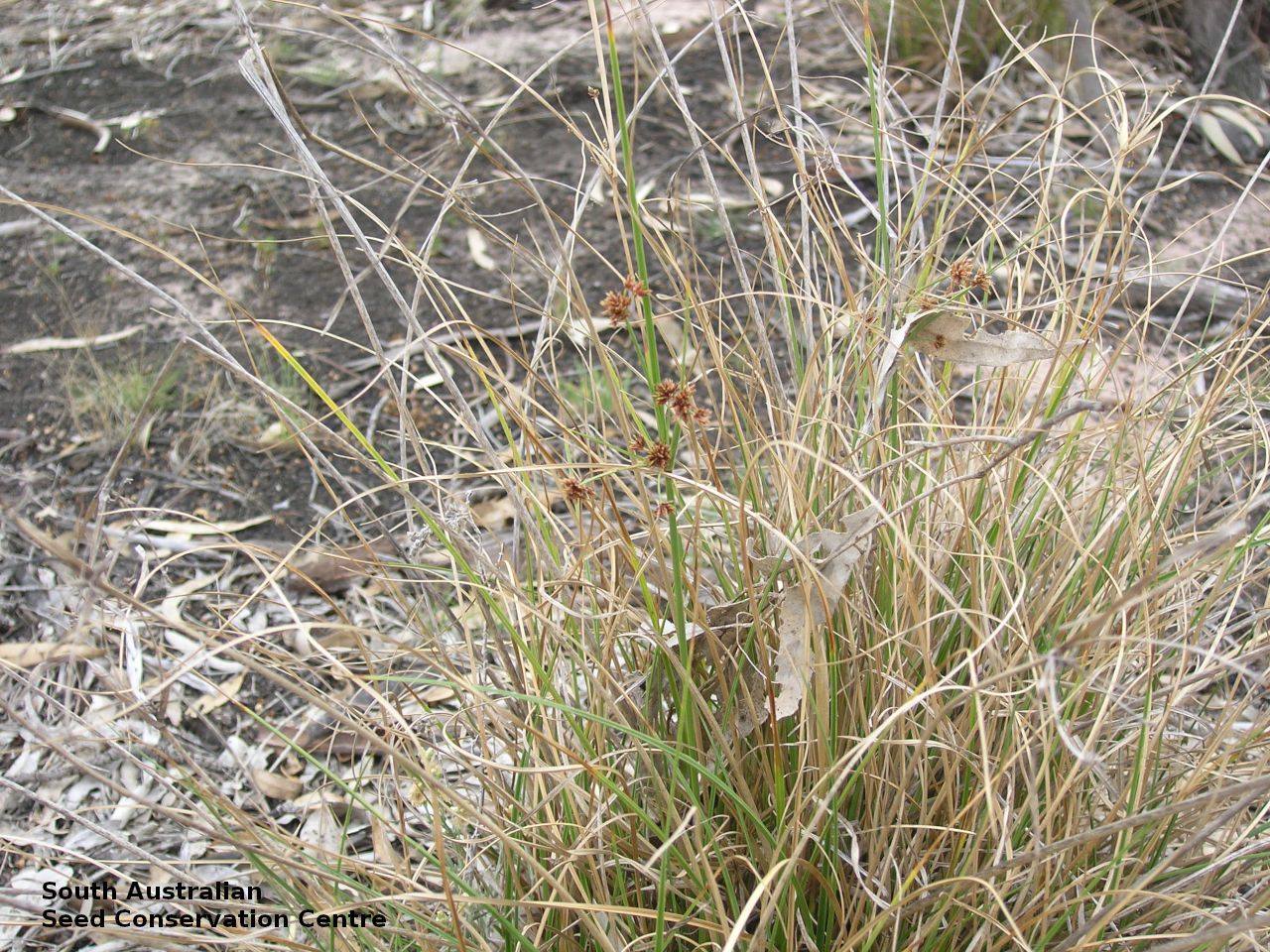
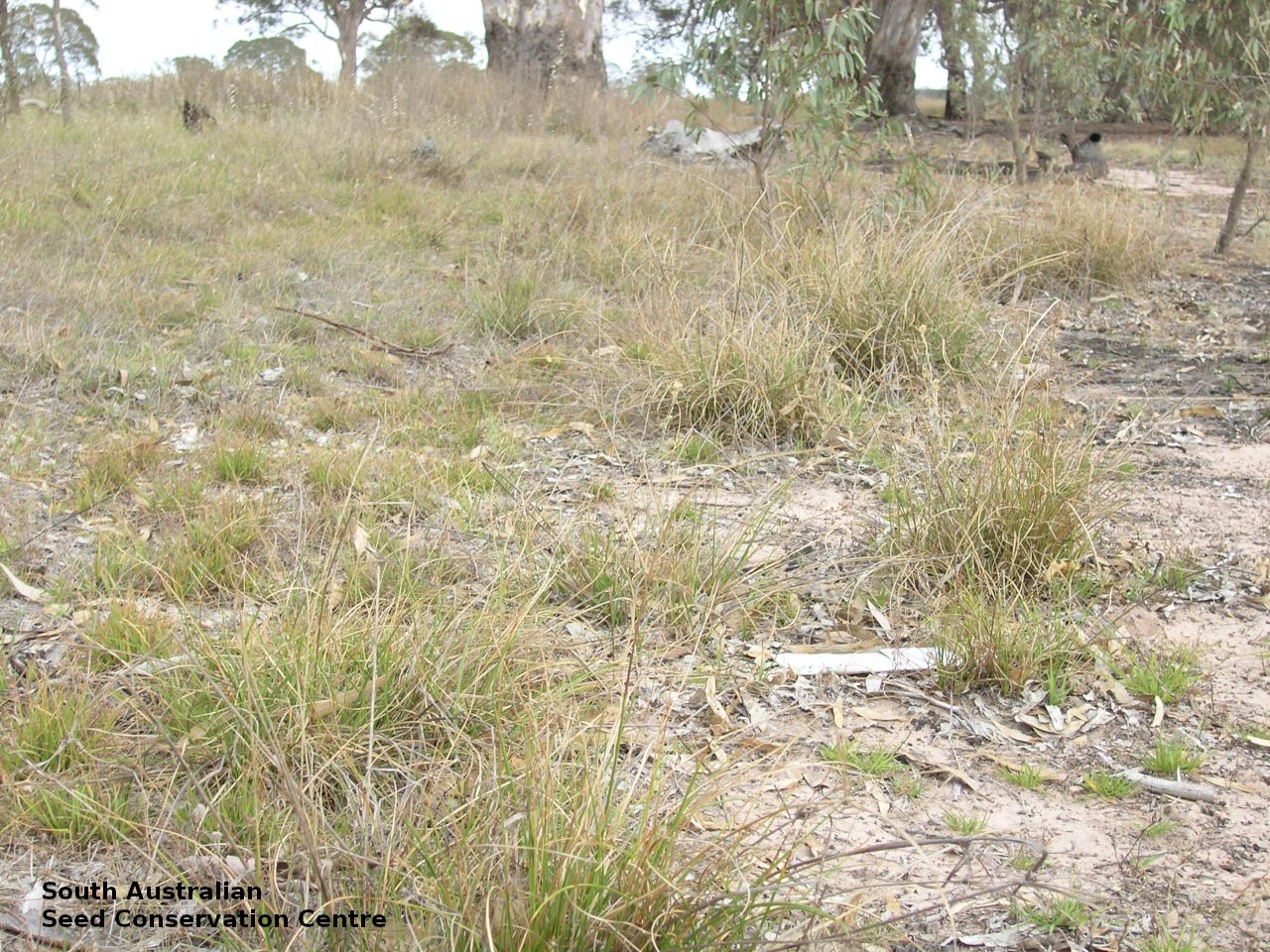
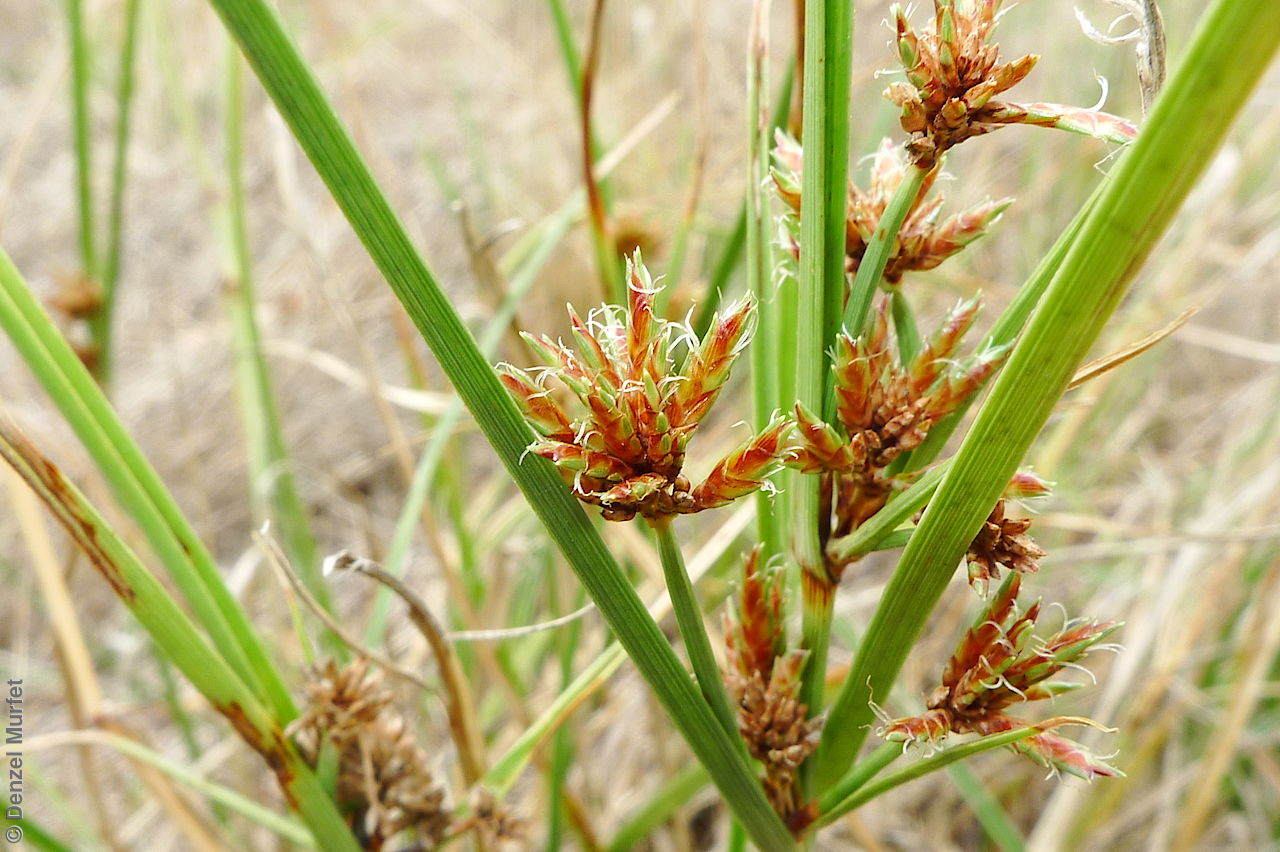
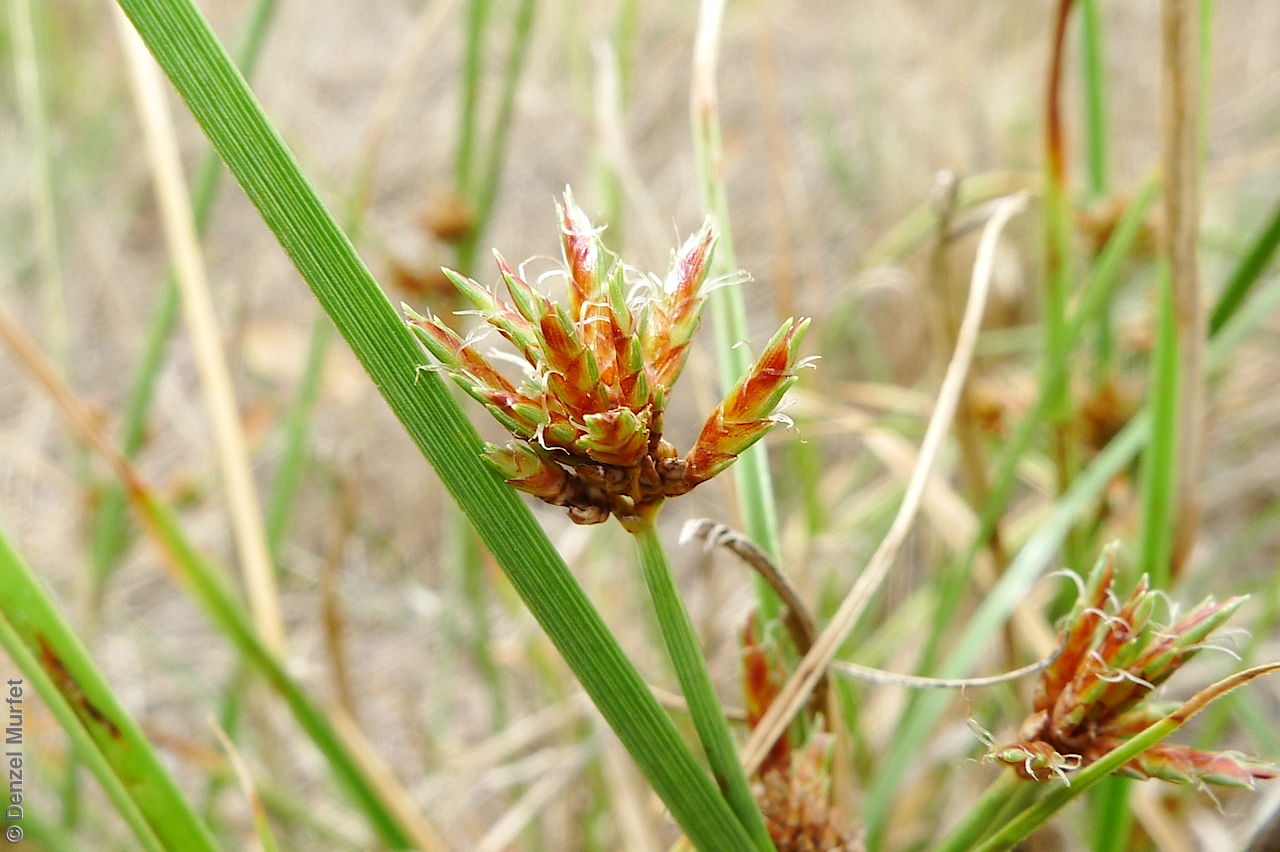
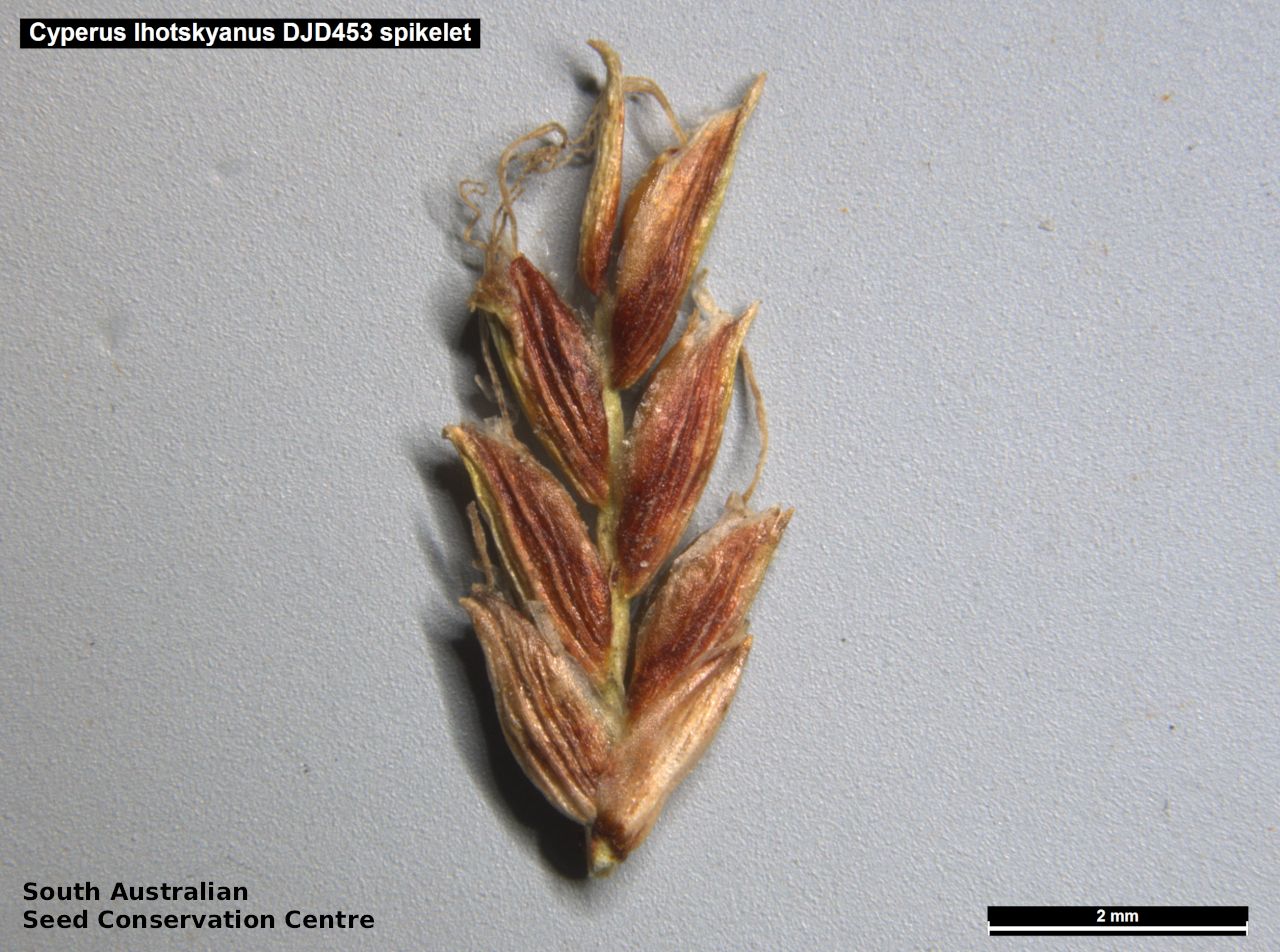
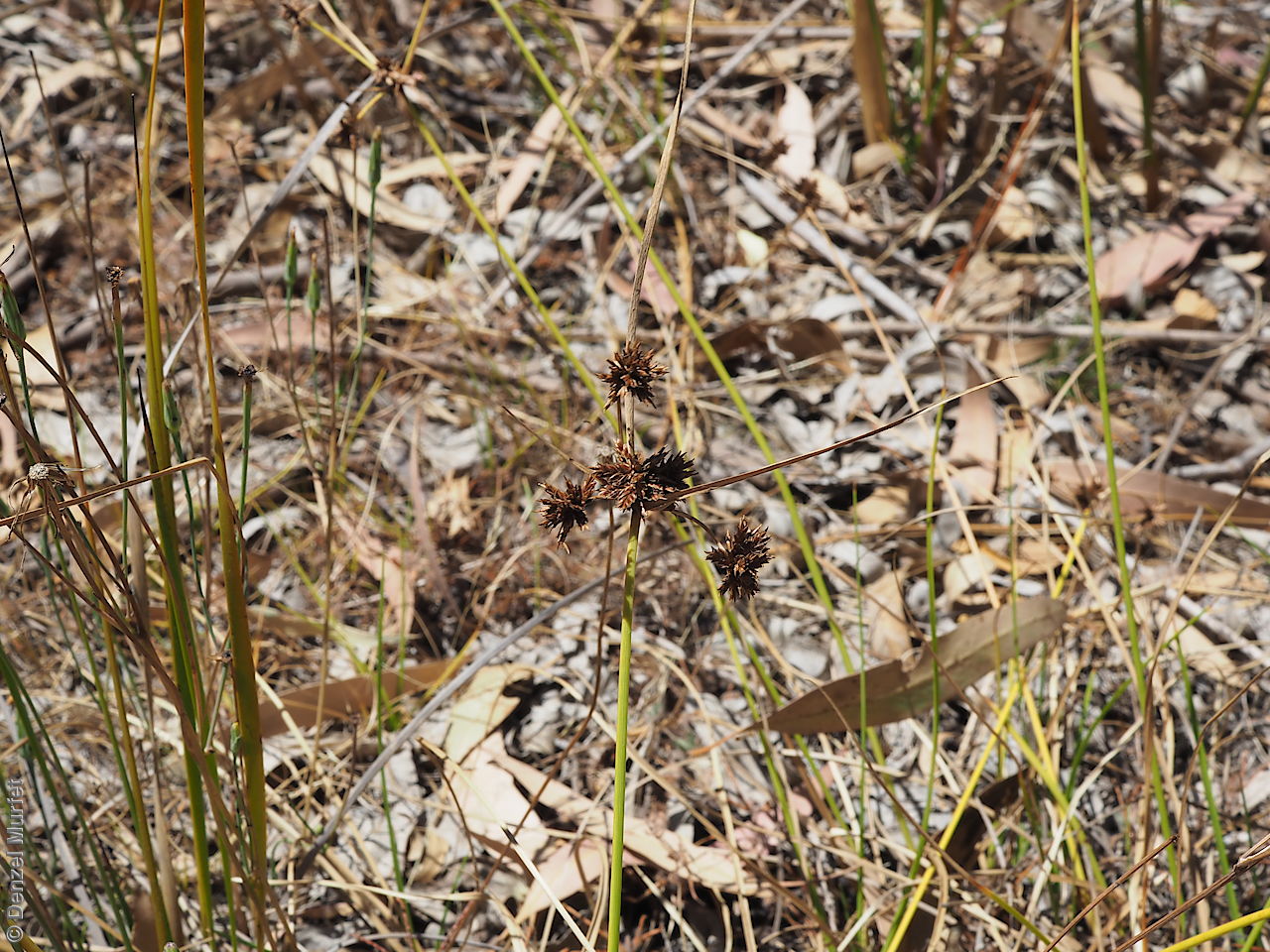
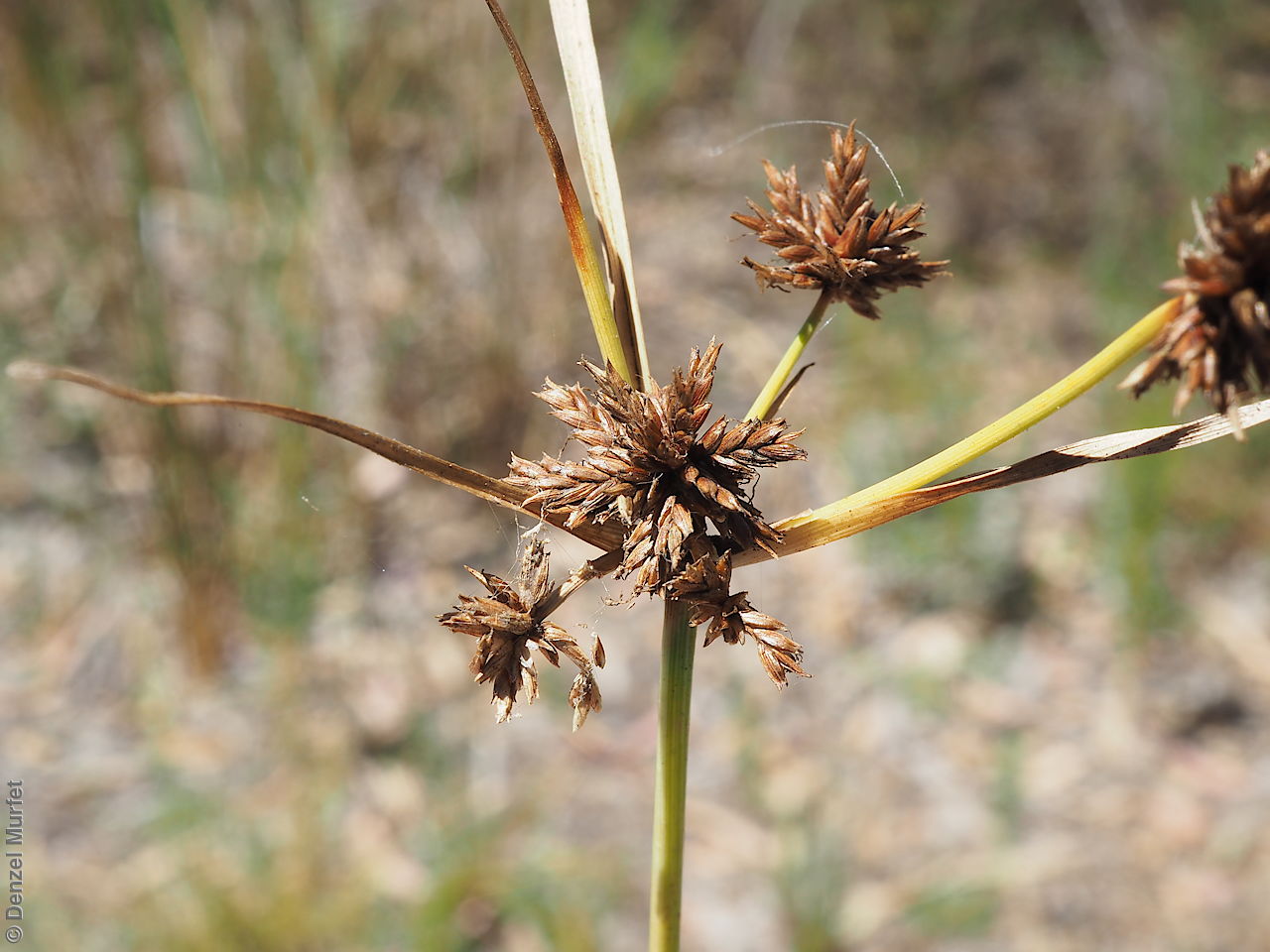
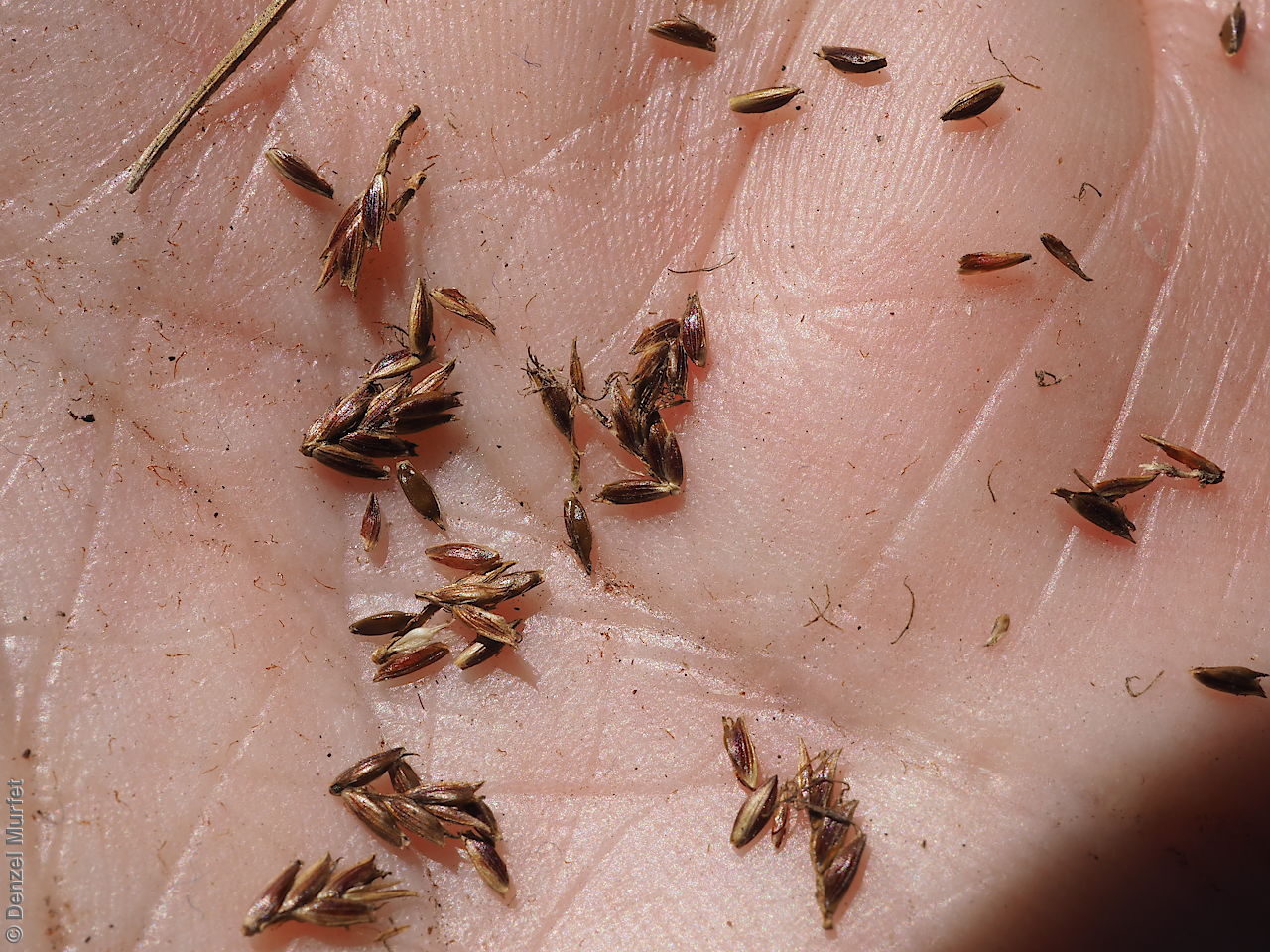
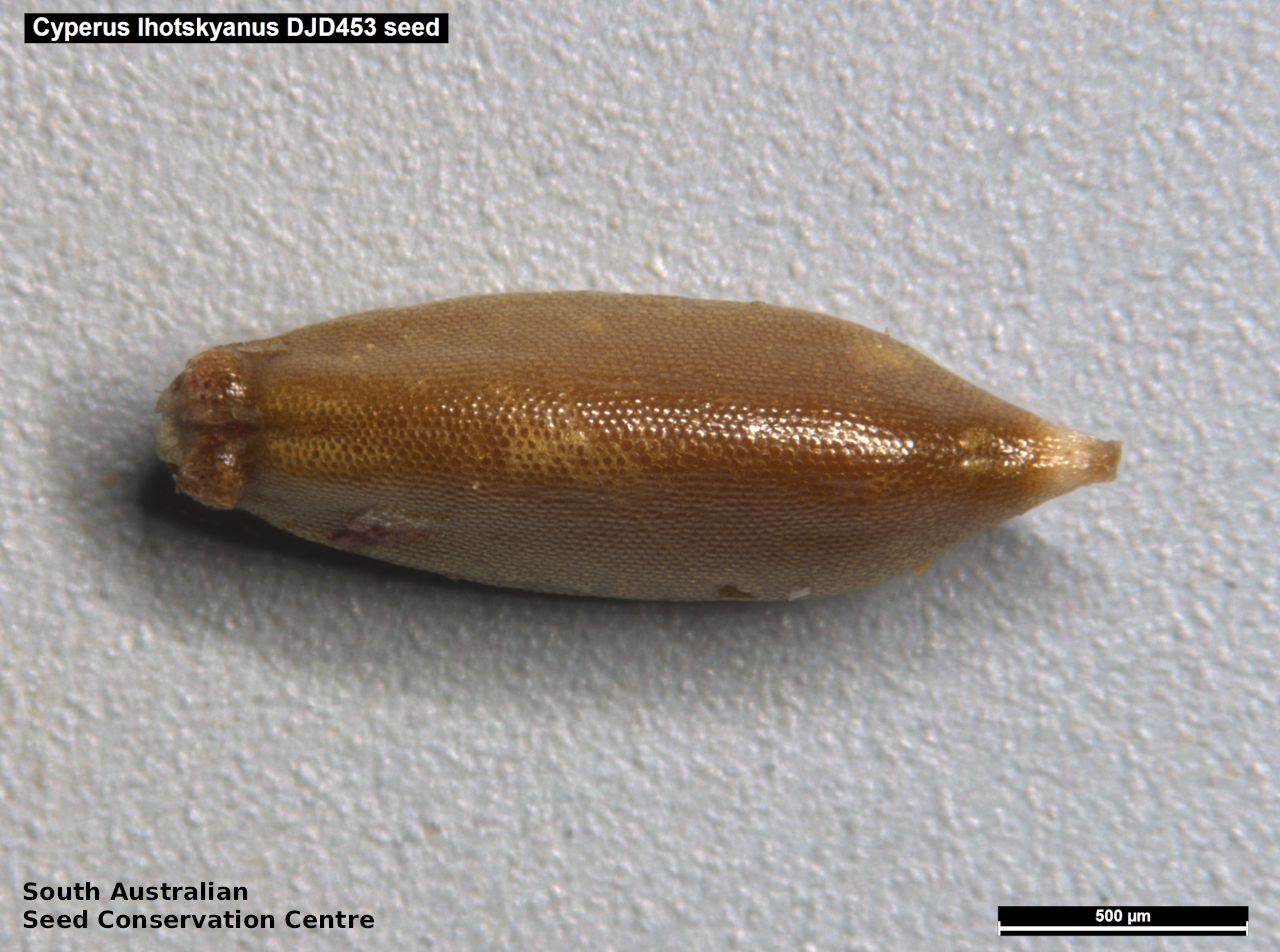
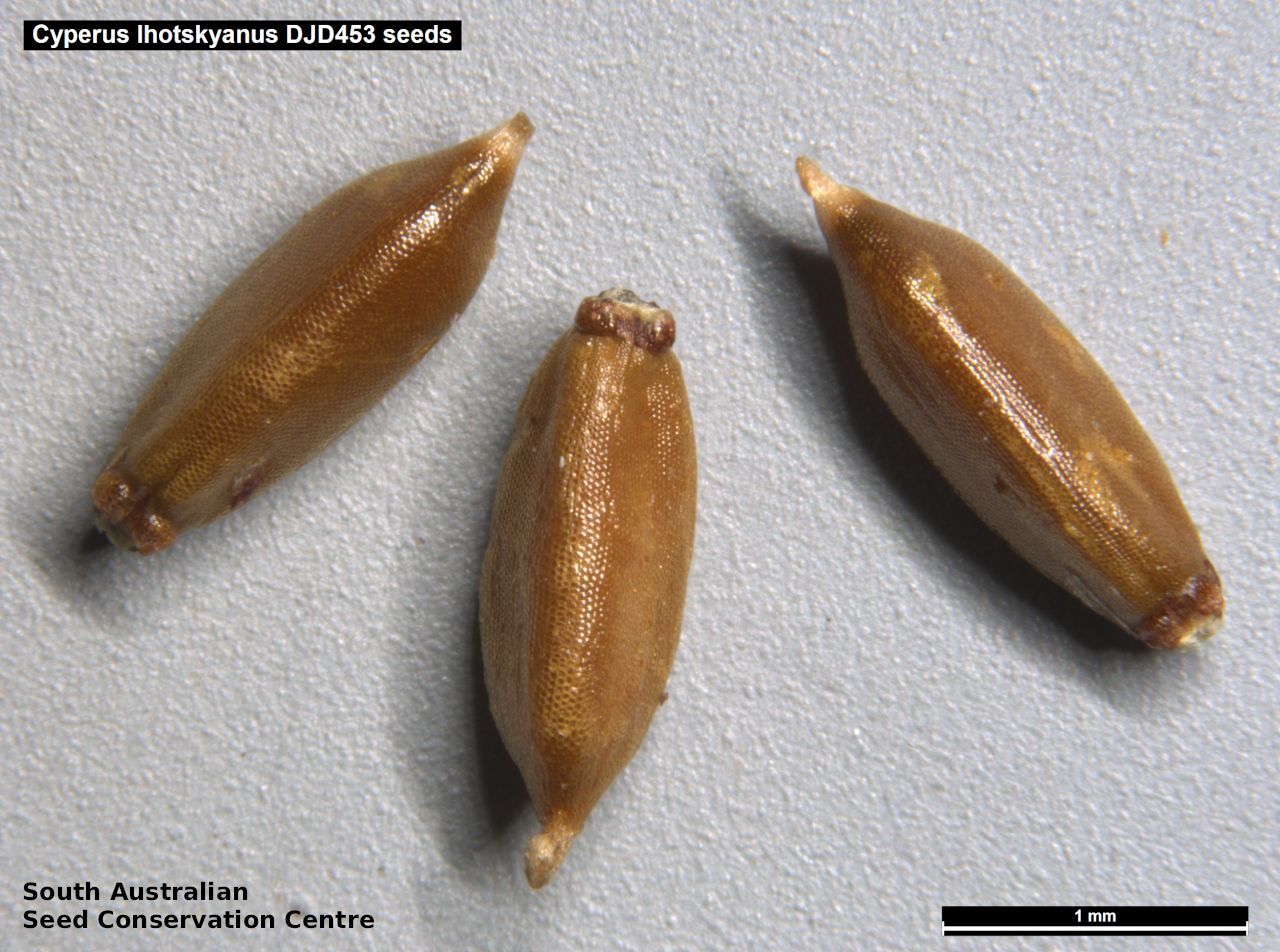


Botanical art
Prior names
Mariscus rutilans
Cyperus rutilans
Etymology
Cyperus from the Latin 'cyperos' and derived from the Greek 'kypeiros', an ancient Greek name used by Homer and Theophrastus for several plants of this genus. Lhotskyanus name after Johan Lhotsky (1795–1866), a Galicia-born Austrian naturalist, lecturer, artist and author who was active in the early colonies of New South Wales and Tasmania from 1832 until 1838.
Distribution and status
Found only in the lower South-east in South Australia growing in wet areas. Also found in New South Wales and Victoria. Native. Very rare in South Australia. Rare in Victoria. Common in New South wales.
Herbarium region: South Eastern
NRM region: South East
AVH map: SA distribution map (external link)
Plant description
Slender perennial sedge with short rhizome. Stems tufted, to 60 cm high; rather slender, trigonous, finely striate, smooth, with bases non-bulbous and dull and pinkish or purple-red below but whitish above; leaves shorter than or equalling the stems, rather rigid but grass-like; flat or complicate, to 3 mm wide. Inflorescence numerous in dense subglobular heads; brown, to 12 mm long and 4 mm wide, compressed, with 8-12-flowers, usually deciduous as a whole when ripe. Flowering between November and January. Fruits are large brown globular head. Seed embryo type is capitate.
Seed collection and propagation
Collect seeds between January and March. Collect fruits by picking off the mature heads, those turning a brown colour and come-off easily. Place the heads in a tray and leave to dry for one to two weeks. Then rub the heads with a rubber bung to dislodge the seeds. Use a sieve to separate any unwanted material. Store the seeds with a desiccant such as dried silica beads or dry rice, in an air tight container in a cool and dry place.
| Location | No. of seeds (weight grams) | Number of plants | Date collected | Collection number Collection location | Date stored | % Viability | Storage temperature |
|---|---|---|---|---|---|---|---|
| MSB | 7,700 (3.5 g) | 50+ | 11-Apr-2006 | DJD453 South Eastern | |||
| BGA | 41,500 (11.27 g) | 50+ | 13-Dec-2018 | DJD3824 South Eastern | 24-Apr-2019 | 100% | -18°C, -80°C |
Number of plants: This is the number of plants from which the seeds were collected.
Collection location: The Herbarium of South Australia's region name.
% Viability: Percentage of filled healthy seeds determined by a cut test or x-ray.